Whether you’re an animal lover or just want to get nudged out of your comfort zone, dog sledding is an exhilarating activity. Nowadays, you don’t need to be a polar explorer to experience it, as many Norwegian tour operators offer excursions to thrill-seeking tourists.
Tours are available in the whole of Norway, but the most common destinations to experience the activity are Finnmark, in Northern Norway, and Svalbard, at the edge of the Arctic Ocean. Thanks to wheeled sleds, you don't even need masses of snow.
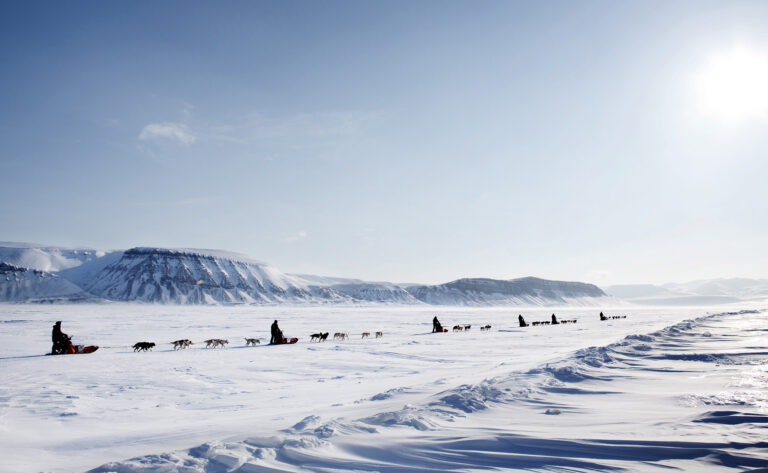
For this article, I tested a tour in Svalbard. So make yourself a hot beverage, put on your comfy woollen socks and join us for this speed run in the polar night.
An unplanned experience
First a bit of context: Due to flight schedules, I found myself having some spare time in Longyearbyen during a work trip. After a quick look at the excursions on offer, I decided to go dog sledding.
This had not been a lifelong dream of mine, nor did I know what to expect since I had done exactly zero research beforehand. But it was well worth my time!
Dog sledding through history
The oldest archaeological evidence of dog sledding is just over a thousand years old, but it has likely existed even longer than that. It originated in what is today the Canadian Arctic, invented by Inuits who needed to get around.
It did not take long before European colonists in North America also found out that dogs handle cold and snow better than horses. New France used dog teams during the Seven Years War in the 18th century, in what is now Québec.
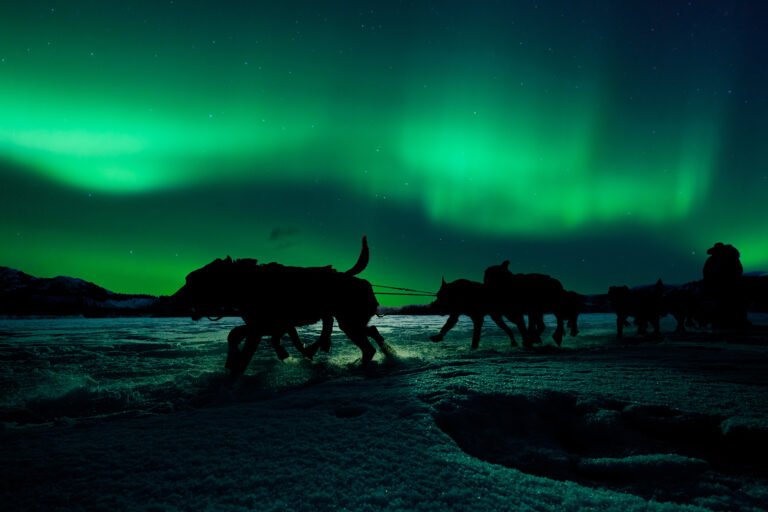
Today, dog sledding in Norway is primarily a tourist activity. During the winter and early Spring, you can find small tour operators dotted around the north of the country and on Svalbard.
A change of clothes
The first step in the excursion, after getting picked up at the hotel by a minibus, was to go to a changing room to put on snow suits, boots, gloves and reflective vests. At first I thought this to be an unnecessary step, as my own clothes were quite warm thank you.
Then I overheard the guide telling another participant about the “surprises” dogs could leave here and there on the site. Of course. Better use their boots, yes.
Getting to know the dogs
After we changed, we got some time to go say hello to the dogs. This is where I need to come with a reality check for people who are uncomfortable around large dogs.
Read more: Dogs in Norway
There are lots of dogs. I never counted, but a good estimate based on the layout of the dog houses and the size of the area would be over a hundred – with all the associated noise… and smells.
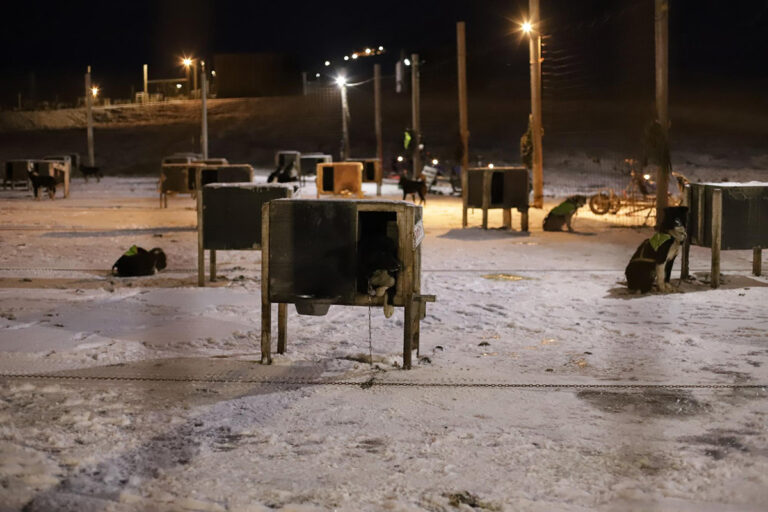
Full disclosure: I do not own a dog, and I never have, but I do like saying hello to a friendly dog and I have a basic understanding of how to handle them. These dogs were large and were bursting at the seams with excitement for the upcoming run.
I can totally see how someone who’s not entirely comfortable around them (like one of the Danish ladies who participated) could potentially have a bad experience. It seemed the lady in question still had fun, but she visibly kept her distance a lot more than other participants.
Dog lovers will know that dogs are like excited children. They are super happy to get visitors and they are smart enough to have associated this greeting ritual to the upcoming trip, which is what they are really excited about.
Be prepared to be licked and jumped on. Or even to have some items stolen. I’m looking at you Knud, stealing one of the gloves I had just borrowed for the tour. I had to tell the guide, of course, who retrieved it and said “he always does that”.
The dogs were a cross of Greenland dog and Alaskan husky. This is a robust and friendly breed that’s so used to the cold that the temperature that day (-3°C/26°F) was actually quite warm to them.
After a safety briefing, we went on to the next step of the experience: preparing the dog teams.
Preparing the teams
The size of the tour group meant there were several teams going out at once. This requires some logistics.
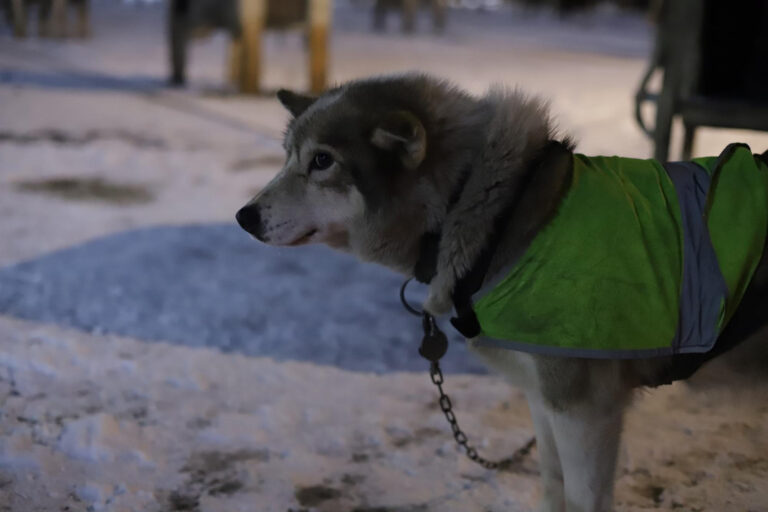
The wire the dogs are attached to while pulling the sled is called a gangline. The first dogs to get hooked up to the gangline are the two lead dogs – the smartest ones, I’m told.
At this point, the dogs are extremely aware of what is happening and dying with excitement about going out running. There is no doubt that these dogs really enjoy what they do.
Read more: Finnmarksløpet: Norway’s Long Distance Sled Dog Race
A side-effect of all this excitement is that the ganglines would quickly get mixed up if you just let them roam free. The dogs are eager to go say hello to their neighbours, and we had four or five sleds being prepared in parallel, right next to each other.
That’s when the first surprise of the trip came. I was asked if I could hold the lead dogs of one of the teams by the collar to make sure they stayed in the right spot while the others were hooked on.
I say I was surprised because as I mentioned earlier, I had not researched this at all and assumed I would only be a “passenger”. But I did step up to the task and kept them on a tight leash, so to speak.
It required quite a bit of force at times. Those dogs are strong!
Hooking up all the dogs takes a while since they have to be brought one by one by a handler, but eventually we got there and we were ready to leave. Normally, the teams consist of eight dogs, but in our case this was reduced to seven because of icy conditions.
Dog sledding in the night
And then we were off! Since we were driving with wheels, we had to keep to the road.
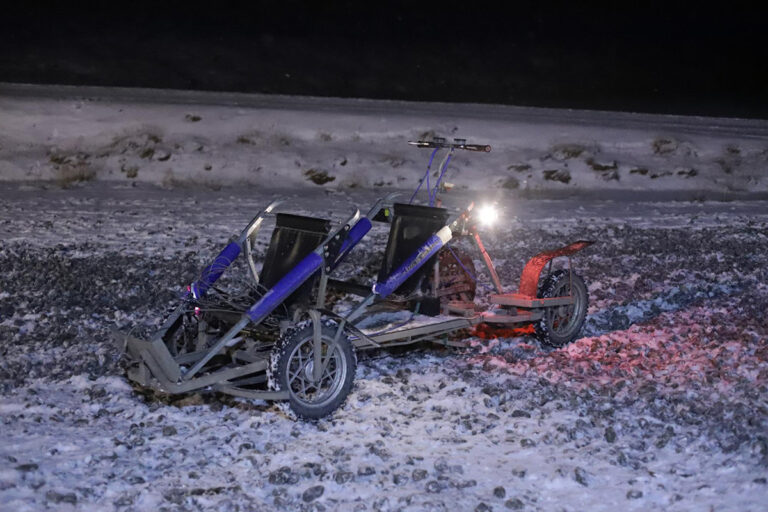
The sleds are equipped with lights, and all aboard wear reflective vests. There is not much car traffic on Svalbard, but still enough that you want to be visible.
Another safety precaution is that the guide accompanying the group in the lead sled carries a half-loaded rifle. The likelihood of having to shoot a polar bear – let alone meeting one when accompanied by a bunch of dogs – is extremely small, but the consequences of not being prepared for such an encounter are unthinkable.
The rules for the trip had been laid out by the guide beforehand. The three teams in our group had to keep their distances from one another, and overtaking was not allowed.
This is because as alluded to previously, two teams being next to each other would mean lines getting tangled up. This means the speed has to be kept under control, which is done with the help of brakes.
Braking
There are two brakes on the handlebar, just like on a bike, and one large handbrake which you should only disengage when you’re ready to go because the dogs recognise the noise and take that as a signal to start running.
In addition, when the sled is stopped at the side of the road, two people have to remain onboard at all times. Brakes or not, an empty sled is light enough for the dogs to just leave with it.
Steering
The dogs are trained to keep to the right side of the road, generally speaking, but they are curious animals and can stray from the ideal path. This is when the person standing at the back has to really countersteer to make sure the sled stays on course.
Countersteering is also necessary when turning at a right angle, at an intersection. At the last minute, dogs will take a shortcut through the ditch, so if you haven’t prepared by steering in the opposite direction well in advance of the intersection, you’ll be going in the ditch with them.
Exhilarating and slightly terrifying
For the first part of my dog sledding journey, the driver was a Danish tourist. I was sitting in the front with his wife – not the Danish lady who was afraid of dogs… a different one.
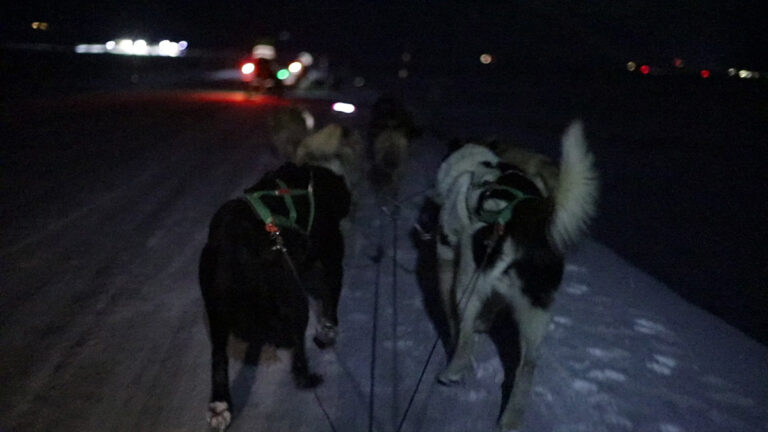
That was the second surprise of the evening for me. Not having done any research prior, I had assumed that the sled would be driven by a… uhm… qualified person.
A qualified person (the guide) was driving the lead sled, but none of the others. As it turns out, this was not a problem.
Initially though, I wasn’t so sure. So when I was asked if I wanted to drive, I immediately declined.
Call me overcautious, but the thought of losing control of a sled pulled by seven dogs was unnerving to me. Plus I really did not expect to be asked to drive until it actually happened.
After some gentle coaxing by the Danish guy, I finally switched spots with him and boy was I glad I did. Because you’re standing, you have a different view on things, and can see both the whole team of dogs and the road.
The steering and braking require your full attention, but are not difficult. The speed, the wind in your face, the snow – it was snowing! – and the contagious, unbridled enthusiasm of the dogs all combined to make the experience one of the most intoxicating I have had in a while.
I am pleased to say, we remained on the road at all times, including that 90 degree turn at the end. If you do end up in the ditch (like we did when the – ahem – Danish guy was driving) it’s no big deal.
Other guides were following us by car and were quick to come and help us sort it out. Other than that, there was a short break for pictures, and another stop at the spot where we turned around.
After the excursion
Back at the dogs’ home base, all that was left to do was to unhook them and bring them to their individual dog houses. Participants helped doing this but if that’s not your thing I’m sure that wouldn’t be a problem.
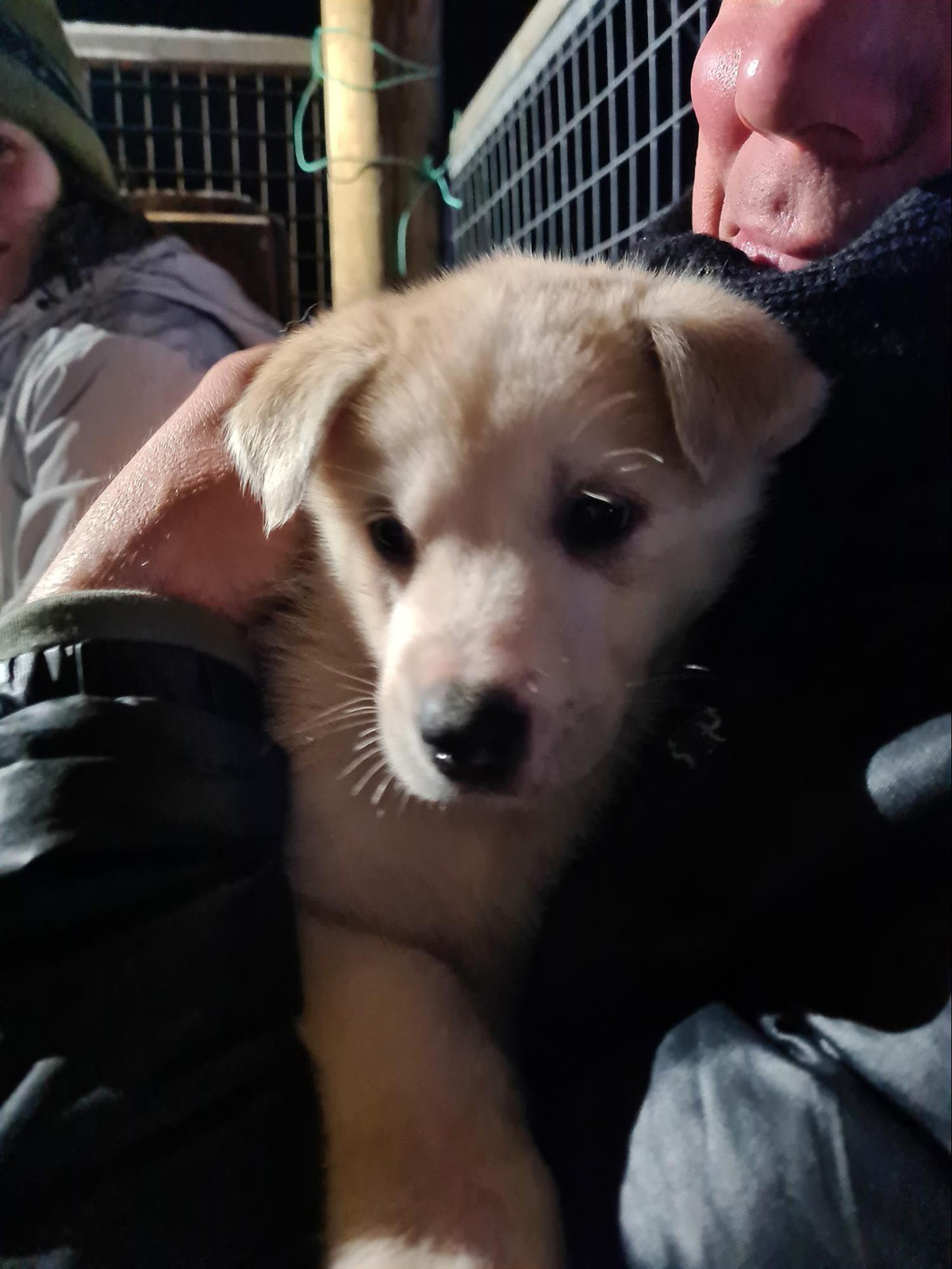
After switching back to our normal clothes, we were driven to a different part of the complex where we could meet the puppies. Most dog sledding tour operators are also dog breeders, and they often have a litter or two onsite.
That done, we moved over to a cosy little log house, where we were served a hot beverage (coffee, tea or hot chocolate), Norwegian waffles and chocolate chip cookies. A bottle of brandy may or may not have also been passed around.
The guides told us more about the dogs, life on Svalbard and the wildlife present on the archipelago.
Is dogsledding in Norway worth it?
I may not have had a lifelong dream of going dog sledding, but boy am I glad I tried it. The dogs were friendly and their enthusiasm was infectious.
Guides were helpful and clearly knowledgeable. The price, at 1500 NOK (around 150 USD) was what you would expect for that kind of experience in a country like Norway.
If I get the chance, I would like to try it again but this time offroad, in the snow, without the wheels. And the second time around, I would volunteer to drive without any coaxing.
Have you ever tried dog sledding? Let us know in the comments!


I did dog sledding with my sister when we stopped off in Tromsø whilst cruising on the Hurtigruten. It was a great experience, but I’d say the only thing that caught me off guard was the smell. You get used to it eventually and it didn’t really negate the experience, but it was just like coming off a plane into a hot country. Definitely up for doing it again! Glad you gave it go a Daniel 🙂
I’m glad it’s not just me then 😅 The smell really was something. Not surprising I guess when you have a hundred dogs living and doing their business in the same area.
I loved reading this account. I did husky mushing in 2019. My friend talked me into it and I’m so glad. I was nervous but it was so exciting! We did go off the track into deep snow one time and my foot slid off the runners too but I managed to hold onto the reins and got back up. I’m going back to Tromso in a few months and would love to do it again but I have injured both of my feet and have osteoporosis so common sense tells me I was fortunate to do it once.